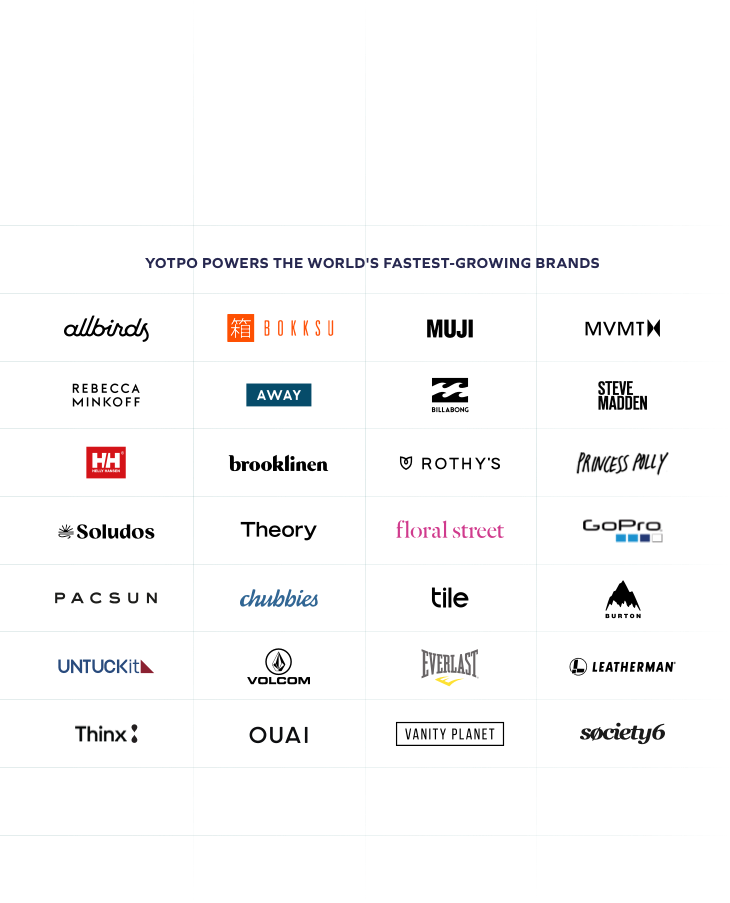For eCommerce brands, acquiring new customers is a crucial aspect of growth, but retaining them has become the bigger question in today’s eCommerce landscape. That’s what makes repeat purchase rate (RPR) such a crucial metric. Yes, it may sound like a mouthful, but don’t worry, we’ve got you covered. We’ll discuss the ins and outs of repeat purchase rate and why it matters so much to your retention strategy.
What is repeat purchase rate in eCommerce?
First things first, let’s define what we mean by “repeat purchase rate” (RPR) in the context of eCommerce. Simply put, RPR measures the percentage of customers who make more than one purchase from your online store. It’s a key metric for tracking customer loyalty and retention.
In other words, RPR shows you how successful you are at keeping your customers coming back for more. It’s essential to eCommerce because repeat customers generate more revenue for brands and are more likely to refer new customers. Brands that can maintain a high RPR can enjoy a sustainable revenue stream and consistent growth.
Why your repeat purchase rate is so important to track
Why is it so crucial to track your repeat purchase rate?
Let us count the ways:
RPR measures customer loyalty
A high RPR indicates that your customers are happy with your products, services, and overall experience. It means they are loyal to your brand and willing to return for future purchases. “Focusing on building long-term, loyal relationships with customers creates a foundation for sustained business growth, customer advocacy, and a competitive edge in the market. By delivering exceptional experiences, personalized engagement, and consistent value, brands can forge deep connections that go beyond one-off transactions,” says Mark Peters, Head of Sales at Ask Phill.
RPR shows customer retention
RPR is a key metric for measuring customer retention, which is essential for sustainable growth. Keeping existing customers is more cost-effective than acquiring new ones. Other important retention metrics include:
- Customer lifetime value (CLTV)
- Average order value (AOV)
- Purchase frequency
RPR helps identify potential issues
If your RPR is low, it may indicate underlying issues with your products, services, or overall customer experience. Tracking RPR can help you identify these issues early on and take corrective action.
RPR highlights the value of your customer base
By increasing your RPR, you can unlock the potential of your customer base and create a sustainable revenue stream. Happy customers are more likely to refer your brand to others, which can lead to even more sales.
On the flip side, a low RPR can be a warning sign for your business. It may indicate that your customers are not satisfied with their experience, that you are not offering competitive pricing, or that you are not providing enough value to keep them coming back.
If you ignore RPR and do not optimize it, you risk losing customers to your competitors and losing out on revenue in the long run. Therefore, tracking RPR should be one of your top priorities as an eCommerce brand.
How to calculate repeat purchase rate
It’s essential to calculate your RPR regularly and keep track of how it changes over time. This will help you understand the impact of your efforts to increase customer loyalty and retention.
Calculating your RPR involves looking at the number of customers who have made more than one purchase from your online store and dividing it by the total number of customers. For example, if you had 500 customers and 100 of them made more than one purchase, your RPR would be 20% (100/500).

To calculate RPR, you can use data from your eCommerce platform, CRM, or email marketing tools. You can also use Google Analytics to measure your RPR by tracking customer behavior on your website.
It’s essential to note that RPR is not a static metric, and it can change over time. Your RPR may increase or decrease depending on various factors, such as changes in pricing, new product launches, or seasonality. Therefore, it’s crucial to calculate your RPR regularly to monitor any changes and adjust your strategies accordingly.
By tracking your RPR over time, you can identify patterns and trends in customer behavior and make informed decisions about how to improve customer loyalty and retention. With regular monitoring, you can quickly identify any issues and take corrective action before they become a significant problem. So, make sure to keep an eye on your RPR and adjust your strategies to keep your customers coming back for more.
Brand loyalty and repeat purchase behavior
Brand loyalty is the holy grail of eCommerce. It means that customers are not just making purchases from your online store, but they are also actively choosing you over your competitors and emotionally connecting to your brand. Repeat purchase rate is a significant indicator of brand loyalty.
Encouraging brand loyalty is essential for building a sustainable eCommerce business. A loyal customer base can generate significant revenue and help you stand out in a crowded market. To make someone loyal to your brand, you need to go beyond just offering high-quality products and excellent customer service. You need to create an emotional connection with your customers that goes beyond the transactional relationship.
Building brand loyalty involves creating a unique brand identity that resonates with your target audience. This can include your brand’s messaging, values, and personality. You can also create a loyalty program that rewards customers for their repeat purchases or incentivizes them to refer their friends and family to your brand.
When customers feel emotionally connected to your brand, they are more likely to make repeat purchases and recommend your brand to others. This, in turn, can increase your RPR and help you build a sustainable customer base.
What impact does repeat purchase rate have on revenue?
To illustrate the impact of RPR on revenue, let’s take an example. Suppose an eCommerce brand has 10,000 customers and an average order value of $100. If the brand has an RPR of 20%, it means 2,000 customers make repeat purchases, generating a revenue of $200,000. Suppose the brand increases its RPR to 25%, generating an additional 500 repeat customers. The brand’s revenue will increase to $225,000, an increase of 12.5%.
Encouraging brand loyalty through repeat purchases can have an outsized impact on your revenue compared to the effort and expense of acquiring new customers. By increasing your RPR, you can build a loyal customer base that will generate revenue for your business for years to come. So, make sure to prioritize tracking and optimizing your RPR, and you will see the benefits in your bottom line.
eCommerce strategies to increase repeat purchase rate
Now that we understand the importance of RPR, let’s look at some strategies eCommerce brands can use to increase this metric.
Personalize the shopping experience
Personalization is key to customer retention. eCommerce brands can use customer data to provide personalized recommendations, offer discounts, and create tailored marketing campaigns. Personalization makes customers feel valued and appreciated, which increases their likelihood of making a repeat purchase.
Reward loyal customers
Loyalty programs are an effective way of incentivizing repeat purchases. Brands can offer discounts, exclusive deals, and rewards points for every purchase. Loyalty programs not only increase RPR but also improve customer engagement and brand loyalty. Keep in mind that reward redemption goes hand in hand with loyalty participation, so make sure you’re promoting your loyalty program effectively.
Optimize post-purchase communication
After a customer makes a purchase, it’s essential to follow up with them. Brands can send personalized thank-you emails, product recommendations, and surveys to understand the customer’s experience. These post-purchase communications make customers feel appreciated and increase their likelihood of making a repeat purchase.

Provide excellent customer service
Customer service is a critical aspect of RPR. Brands that provide excellent customer service create a positive customer experience, which leads to increased customer loyalty and RPR. Brands should have clear return policies, offer fast shipping, and provide excellent customer support.
Create a sense of urgency
Creating a sense of urgency can be a powerful motivator for customers to make a repeat purchase. Brands can use limited-time discounts, flash sales, and scarcity tactics to create urgency and increase RPR. This is especially effective when using SMS marketing. Send your customers timely texts based on different triggers: abandoned carts, VIP tier changes, and weekend-only discounts.
Offer a subscription
Converting one-time customers to subscribers is a great way to increase recurring revenue. In fact, 50% of subscribers have more than one active subscription. We can attribute these high rates to the frictionless purchase process.

With the subscription experience, the customer doesn’t need to go through the checkout process each time they shop. We know that by creating a smooth, uncomplicated experience, your customers are more likely to complete purchases and return to buy again with greater frequency.
Examples of eCommerce brands that excel with repeat purchase strategies
Here are a few examples of brands making the most of RPR tactics.
- Amazon: Amazon is a prime example of a brand that excels at customer retention. Amazon’s Prime program provides customers with exclusive deals, fast shipping, and access to streaming services, creating a sense of loyalty and value.
- Dollar Shave Club: Dollar Shave Club’s subscription model incentivizes customers to make repeat purchases. Customers can choose from a variety of shaving products, and the brand delivers them regularly, ensuring customers have a constant supply.
- Sephora: Sephora’s loyalty program, Beauty Insider, rewards customers with exclusive deals, free products, and access to VIP events. The program incentivizes repeat purchases and creates a sense of community and exclusivity.
Repeat purchase rate is a crucial metric for eCommerce brands to track and optimize. It measures customer loyalty, retention, and revenue, making it an essential KPI for eCommerce brands. To increase RPR, brands need to focus on personalization, loyalty programs, post-purchase communication, excellent customer service, and urgency. By optimizing their RPR, eCommerce brands can create a sustainable revenue stream and consistent growth.














 Join a free demo, personalized to fit your needs
Join a free demo, personalized to fit your needs